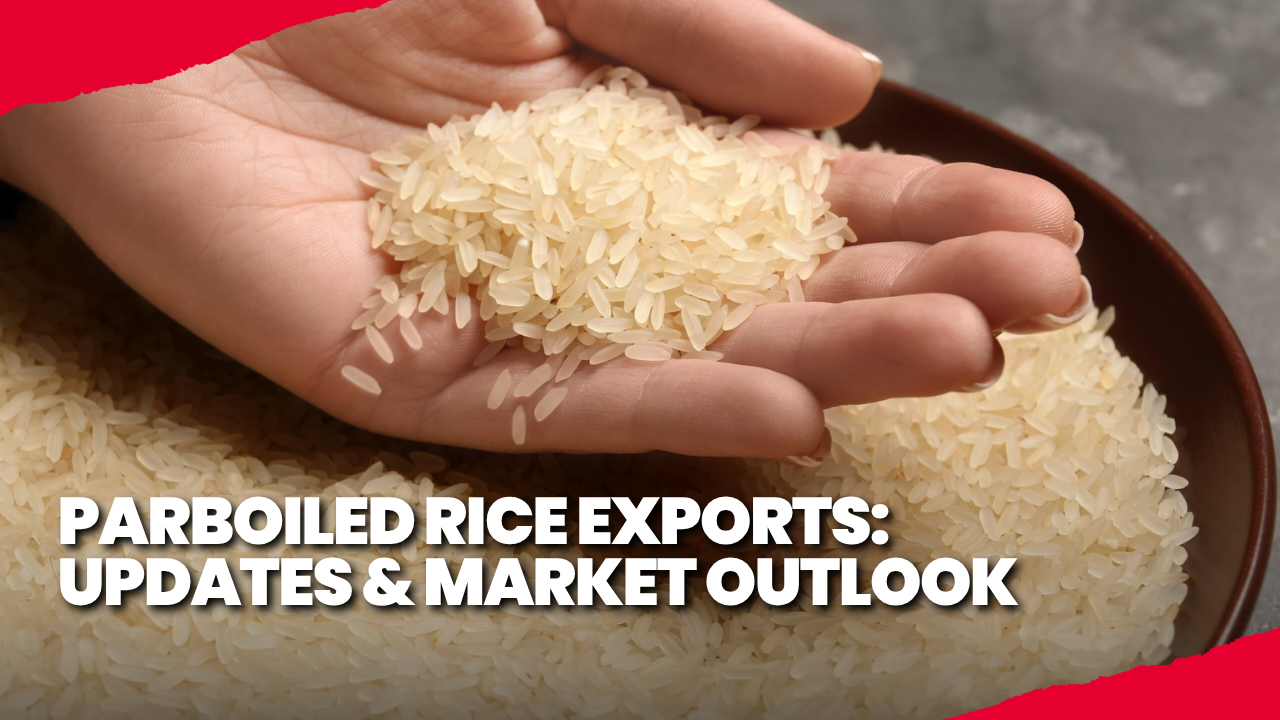
Among the several types of rice, parboiled rice is the most prized for its nutritional value, taste, and ease of preparation. India, which exports more rice than any other country, is a significant source of parboiled rice for major markets, especially in Asia and Africa.
Nevertheless, international trade has been significantly affected by the Indian government’s policies on export duties and taxes in the past few years. These policies have gone in and out between putting high duties on goods to keep prices in check and taking them off to boost exports. Because of this, the business that exports parboiled rice has seen significant changes in demand and profits.
This blog post describes the whole situation, from the history of exporting parboiled rice and changing export taxes to current data, problems, and hopes for the coming years.
What is Parboiled Rice?
If you boil rice while it’s still in its husk, you get parboiled rice. Soaking, steaming, and cooling the rice are all steps in the process before it is milled. Because of this method, vitamins and minerals are moved from the bran layer into the grain, making it healthier.
Because of this, the rice is less sticky, healthier, and simpler to cook. It also stays fresh longer and breaks down less when milled. Countries in Africa, the Middle East, and South Asia all want parboiled rice because of these reasons.
There are millions of farmers and millers who depend on it for their living, and it’s more than just an agricultural product for India.
Export Tax on Parboiled Rice Timeline
In the past few years, there have been several changes to how parboiled rice can be exported. Here is a quick look at the record.
- In August 2023, a 20% export tax was put on parboiled rice to keep prices down in the country and make sure there was enough food for everyone.
- In September 2024, the parboiled rice exports duty was lowered from 20% to 10% because there was too much stock and crops were doing better.
- In October 2024, the government totally removed the export tax to boost exports and keep prices stable for farmers.
- In May 2025, the parboiled rice export duty was increased to 20% with the intent of lowering inflation and keeping prices stable in the country.
These frequent changes have made the international rice trade less stable, which has had a direct effect on India’s export performance.
Also Read This: Top Cashew Kernels Exporters & Cashew Nut Export Trends
Key Statistics on India’s Rice and Parboiled Rice Exports
| Period / Metric | Value / Change | Remarks |
| India’s total rice exports (Sep 2023 – Aug 2024) | 14.3 million metric tons | Down by nearly one-third from the previous year |
| Decline in parboiled rice exports (2023–24) | –1.7 million MT (≈ 20%) | Impacted by the higher export duty |
| Parboiled rice exports (Jan–Aug 2024) | 5.1 million metric tons | About a 13% drop compared to the previous year |
| West Africa’s import of Indian parboiled rice (Mar 2025) | 485,735 metric tons | Africa remains the top importing region |
| Forecast for total rice exports (2024–25) | 22.5 million metric tons | Strong rebound expected after duty removal |
| India’s rice stock levels (Dec 2023) | ~56 million metric tons | Stock increased by around 15% YoY |
Market Effects and Trends in Exports
During the period in which the 20% duty was in effect, India’s global market share faced a notable decline in exports. Many African importers shifted markets to Thailand and Vietnam in order to manage their supply requirements.
Lower exports caused India’s stock levels to go up, which put pressure on local prices.
When the tax was taken away in October 2024, exports went through an increase again, which helped farmers make greater revenue and trade margins. Exporters are cautiously monitoring the government’s next move in light of the 20% duty return in mid-2025.
Why Policies Change So Frequently
A lot of policy changes have happened in India’s parboiled rice exports business for a few reasons. As long as there is inflation, the government puts export taxes in place to make sure there is enough food for everyone in the country. Changing export duties helps keep local store prices stable when demand goes up, which is another big reason.
When stock levels are high, the government may lower or eliminate a variety of taxes to help farmers get rid of extra products. Food prices often affect how people feel before elections, which is another political factor.
Finally, India changed its export policies to keep its competitiveness internationally and affect prices in the international market. It is the largest manufacturer of rice in the world.
Wrapping It Up
India’s export of parboiled rice shows how changes in policy can have a direct effect on international trade. Export duties are changed often, going from 0% to 20% and back again. This has created both possibilities and problems.
India is still a top supplier of parboiled rice because of its quality, production ability, and reputation. With consistent trade regulations and stable export duties, India can maintain its status as the most dependable and dominant player in the international rice market.
FAQ
As of May 2025, India has imposed a 20% export duty on parboiled rice.
The export tax was removed because of good crops and a lot of rice, which helped farmers and encouraged exports.
Some of the biggest buyers of Indian parboiled rice are countries in West Africa, like Nigeria, Senegal, and Benin.
Also Checkout Our YouTube Channel: @limeinstituteofexportimport






